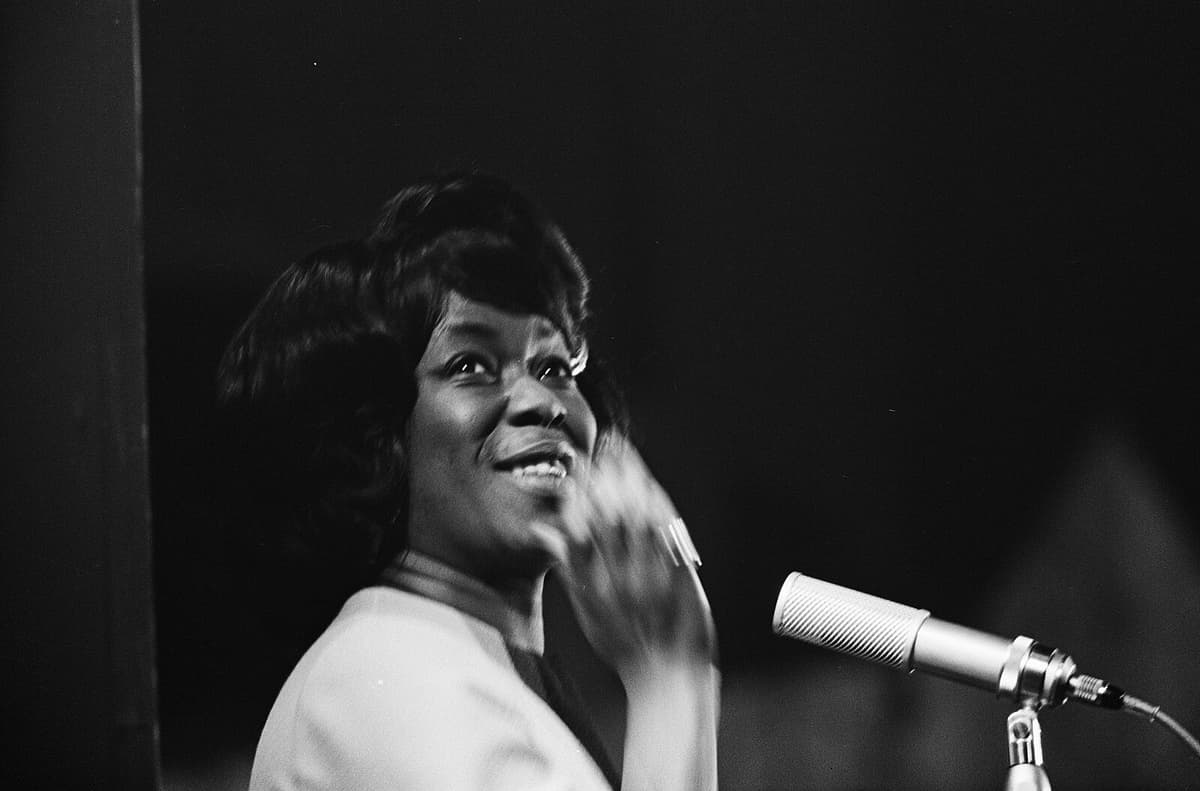Honoring the Divine: Sarah Vaughan Centennial Celebrations Popping Up Everywhere
Vaughan was unquestionably one of the greatest jazz singers of all time, and yet also happily existed in the pop world. She could both break hearts and send spirits soaring.

Whatever else you want to say about Sarah Vaughan, she was an artist of extremes, and often of contradictions. She was born with a voice that, if not for the color of her skin in her generation, would have almost immediately made her an uber-diva of the opera world. Yet she chose to use chops the good lord had obviously intended for the glorification of Verdi and Puccini to lift up Ellington, Gershwin, and the blues.
Vaughan was unquestionably one of the greatest jazz singers of all time — probably only Ella Fitzgerald and Billie Holiday are competition for the no. 1 spot — and yet she happily existed in the pop world: She made dozens of albums of standards with strings that were eagerly purchased by millions of mass-market listeners who had never been anywhere near a jazz club.
Vaughan recorded rather trivial songs for pop singles, a few of which were even chart hits, which she professed not to like. She sang everything from the songs of the Beatles to the poetry of the Pope. She was a brilliant scat singer who could out-improvise virtually any master instrumentalist, but also, in the right circumstances, could break your heart with a sad song or send your spirits soaring with a happy tune.
There was so much to Sarah Vaughan that it’s hardly surprising that, early in her career, fans began speaking of her with the same reverence previously associated with the 19th century’s most famous Sarah, the legendary actress Bernhardt. Both Sarahs were labeled “Divine,” with both possessing abilities that made them something seemingly beyond human.
This year marks Vaughan’s centennial, and there are celebrations galore all over the city, the country, and the world. In fact, the New Jersey Center for the Performing Arts at Vaughan’s hometown of Newark anticipated the big birthday with a gala concert a few months ago. It featured such contemporary jazz vocal greats as Cyrille Aimée, Jazzmeia Horn, and Gregory Porter.
As far as Manhattan is concerned, the big event is the two-night “Sarah Vaughan Centennial” at Jazz at Lincoln Center April 19-20. The two concerts will be hosted by a veteran Grammy-winning singer, Dee Dee Bridgewater, who was a friend and a devotee as well as a disciple of The Divine One.
Yet, even though the emphasis is on jazz history and the legacy of this remarkable artist, the accent is distinctly on youth: Among the other artists on the bill are a half-dozen younger winners of the annual Sarah Vaughan International Jazz Vocal Competition, including Cyrille Aimee, Jazzmeia Horn, Quiana Lynell, Lucia Gutierrez Rebolloso, and Tyreek McDole.
They will be accompanied by another youth-oriented organization, the Jazz House Legacy Band, under the direction of pianist Caelan Cardello and featuring such heavy hitters as tenor saxophonist Julian Lee and trumpeter Wallace Roney Jr.
On the same two nights, the Chicago-based baritone who is the first male singer to win the Vaughan competition, G. Thomas Allen, makes his debut with a Sarah-centric program across the hall at Dizzy’s Club.
Radio-wise, New York’s WKCR is devoting two full days to Vaughan’s recordings on the “Sarah Vaughan Centennial Birthday Broadcast.” Lastly, I’ll mention that I’m hosting a special presentation on Vaughan’s life and music at the Film Forum on the centennial day, March 27, and also devoting two episodes of my radio series on KSDS Jazz 88.3 to her music.
It’s safe to say that every Sarah Vaughan centennial event will conclude with the song she used to end virtually all of her performances during the final phase of her career, Stephen Sondheim’s “Send in the Clowns.” She didn’t exactly jazz it up, but rather she imbued it with operatic grandeur — and at the same time, went back to her roots in the Mt. Zion Baptist Church of Newark in making it a kind of secular hymn.
In “A Little Night Music,” the show that introduced it, the song uses theatrical metaphors — “farce” and “timing” — to describe two people in a relationship who are out of sync with each other. In Vaughan’s rafter-raising interpretation, it’s about coming to terms with God.
Somehow, she takes a show tune and makes it jazz, opera, and gospel all at once. It was an appropriate career climax for a remarkable artist who was not only divine but sassy and supremely human.

